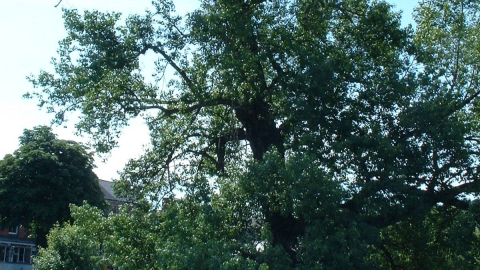
©Neil Wyatt
Black poplar
Species information
Category
Statistics
Height: 20-25mConservation status
When to see
January to DecemberAbout
Our native and wild black poplar is a massive tree, with a thick, fissured trunk, that can be found on floodplains, around flooded gravel pits and along ditches. It is particularly prevalent in Shropshire, Cheshire, Somerset, the Vale of Aylesbury and East Anglia, but populations have declined massively over the years. Black poplars have formed an important part of our landscape and culture for centuries, from being landmarks and a focus for celebration, to inspiring the famous painter, Constable, and providing timber for floorboards.How to identify
The black poplar has deeply fissured bark, knobbly 'bosses' on its trunk and spreading branches that often touch the ground, before sweeping upwards again in a mass of twigs. It displays red catkins.In our area
In Staffordshire we estimate there are around 80 black poplars and only a handful of these are females, three confirmed to date. This scarcity of females, in combination with significant drainage of agricultural fields, has led to a steep decline in the species and made them a focus of our Staffordshire Biodiversity Action Plan.
They grow best in boggy conditions, near ditches and floodplains, so if you’re headed out on a riverside walk please keep an eye out for them and let us know if you find any!
In spring (April) the males and females have catkins, the males are red and the females (very rare) have yellow/green catkins. Once female catkins are fertilised they go fluffy in summer (usually June).
If you think you’ve found a black poplar please take photographs of the leaves and bark, and send them and the exact location to our Head of Nature Recovery Networks Dave Cadman via email d.cadman@staffs-wildlife.org.uk
